| On
the western slope of Akrotiri is a park with various memorials and a
breathtaking view over Chania.
|
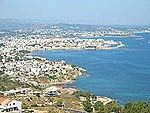
|
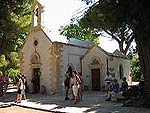 |
The
hill is called Profitis Ilias and is named after a monastery, once
situated here. Now you find only the church, which was rebuilt on Russian
orders after the bombardment in 1897.
|
|
|
|
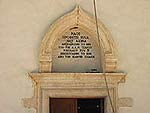
|
|
|
|
|
The
inscription above the door of the Profitis Ilias church:
Church of
Profitis Ilias from 16th century.
Renovated by his highness tsar Nikolai
2nd
and repaired in 1936 by Ioannis Iliakis.
|
|
|
|
|
|
|
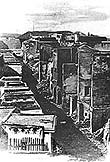 |
The
hill is moreover known for its importance during the rebellion against the
Turks. While the Turks in January 1897 carried out massacres on the
Christian population in Chania and set several parts of the town on fire,
and the navy of the great powers stayed passively anchored outside the
harbour, the Revolutionary Committee of Akrotiri was gathered here under
the leadership of Ioannis Sfakianakis and Eleftherios Venizelos. |

|
|
Venizelos
with rebels and
representatives of the Great Powers |
Chania
after the
Turkish attack
|
|
|
|
| Without
warning the international navy started to fire at the camp of the rebels.
The Greek flag waving above the camp was hit and fell to the ground. One
of the rebels, Spyros Kagialedakis, immediately caught hold of it and
jumped up onto the highest rock with the flag in his outstretched hands.
This caused the great powers to stop the firing.
|
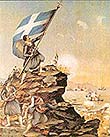
|
| The
incident created such a sensation in all of Europe that they now, after
half a century of passiveness, began to seriously work out a solution of
the conflicts in Crete. |
|
|
|
|
|
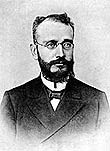 |
The
island was occupied by the great powers, until it became autonomous - with
prince George of Greece as the High Commissioner at first (1898-1906) and
Alexandros Za´mis later (1906-1908).
|
| Eleftherios
Venizelos and many others with him, were however not happy with this
arrangement, and they worked for Crete being completely united with Greece,
which happened on December 1st 1913.
|
|
|
|
|
|
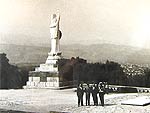 |
A
big statue of the goddess of liberty was set up in 1937, but is was partly
destroyed during the German bombardments in World War II, and an
earthquake some years later destroyed the remains of it.
|
|
In
1997 - on the 100th anniversary of the fighting in Akrotiri - a statue
representing Kagialedakis with the flag was set up.
|
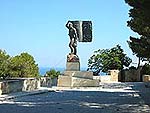
|
|
|
|
|
|
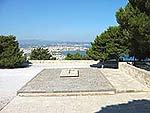 |
In
front of the Profitis Ilias church are the graves of Eleftherios
Venizelos and his son, Sofoklis.
|
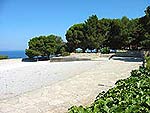
|
|
|
|
|
|
| Eleftherios
Venizelos was probably one of the biggest politicians of modern Greece and
as mentioned earlier, he played a crucial part in Crete's unification with
Greece. Eleftherios Venizelos died in exile in Paris in 1936, but his
coffin was taken to Chania and then buried in Akrotiri.
|

|
|
|
|
Venizelos'
coffin is carried
from the harbour of Chania to Akrotiri. |
|
|
|
|











